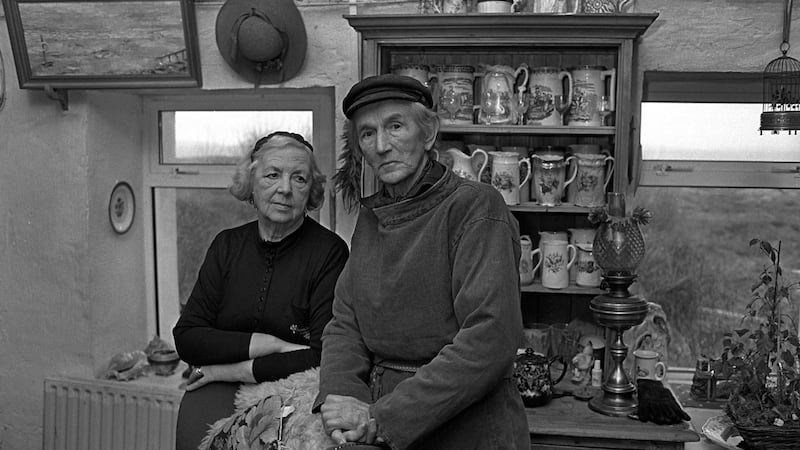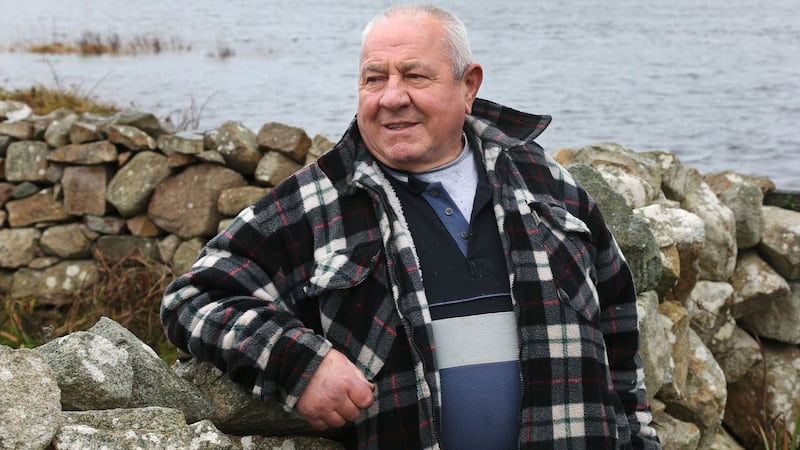When former minister for health Dr Noël Browne was buried in the sandy soil overlooking the Atlantic in south Connemara in May 1997, neighbours from Baile na hAbhann, near Rossaveel, remember how his grandson quoted WH Auden and his grand-daughter played Bach’s Sonata No 5 on the flute.
They also recall how so few senior politicians were present afterwards to shake their hands.
A member at one time or another of five political parties and, by the time of his death, of none, the man credited with radical reform of the health service had waged many public battles and taken on the Catholic Church, but had made enemies along the way.


But he is remembered as a “kind man, a good neighbour” by the local community which intends to lay a wreath on his grave on Sunday, December 20th at Maoras cemetery to mark the centenary of his birth.
“I knew him very well, and he even gave me his boat to fish in the lake,” Séamus Ó Scanláin recalls.
Dr Browne had been sympathetic to the fact that Ó Scanláin, who lived near him at An Cloch Mór, had been told he had no entitlement to fish in Loch an Chraoibhín.
As with many waterways, the rights were held under a system of private ownership dating back to the 17th century confiscation of land by the British crown.
Free health care
“A judge came to my house one Sunday in 1974 when I had flu and asked why I was fishing on ‘her’ lake and I asked if she owned the air and the rain and the sky as well,”Ó Scanláin recalls.
“She was pretty mad and I never heard from her again.
“Dr Browne gave me the boat so I could get out on the water and fish away . . . he was worried that I might stop.”
The boat no longer survives, but Ó Scanláin remembers Browne as a neighbour who was concerned about the community and keen to ensure local children had access to musical education and could learn to sail.
"He had his own boatín at Sruthán near An Cheathrú Rua, and he loved to be on the water," Sonny Feeney says.
The Feeney family were immediate neighbours of Noël and Phyllis Browne when the couple bought the whitewashed thatched cottage – currently up for sale – by the shore in the early 1960s.
“He had good Irish – he never spoke English to me,” Feeney remembers. “He told me that all he ever wanted after his death was a headstone.”
Dr Browne’s mother had been buried in a pauper’s grave, and one of two siblings lost to tuberculosis was also laid in unmarked ground, he told Feeney. “So he just wanted to have an ordinary stone off a wall himself.”
Former political colleague Donncha Ó hÉallaithe recalls getting to know Browne through the Socialist Labour Party in the early 1980s.
By then, it had been almost three decades since Dr Browne had quit as minister for health in protest over opposition to plans, previously mapped out by a Fianna Fáil administration, to introduce free ante- and post-natal care for mothers and to extend free health treatment for all children under 16 without a means test.
"I was one of the many people who followed him into the new Socialist Labour Party (SLP) after the refusal of the Labour Party to allow him to stand in the 1977 general election,"Ó hÉallaithe says.
"It was a very interesting time in Ireland, coming out of a period when there was a fairly dreadful [Fine Gael-Labour] government of 1973-77 , the Provisional IRA campaign at full strength in the North and repressive legislation had been passed here.
“The SLP was formed at a time when people wanted to see a change in politics, and it attracted a number of idealistic, left-wing people.
“But Noël wasn’t a great man for sticking to the discipline of a party, and particularly when policies were formed which he might not have totally agreed with.
"That came to a head in early 1979 when a particular resolution was passed on Northern Ireland which Noël didn't agree with and I didn't agree with myself," Ó hÉallaithe recalls.
“Noël’s legacy is that he became an icon for people who were dissatisfied with the social policies of this State, particularly in the area of health.
“Now, at the centenary of his birth, it is really ironic that Ireland still has a two-tier health system and it is worth remembering the struggle he had – back then with the bishops and doctors – still needs to be fought.”
That struggle was also remembered by Dr Browne's close friend, President Michael D Higgins, when, as a Galway West TD at the time, he unveiled a limestone bench designed by Denis Goggin and Reamonn Ó Flaitheartha at the Browne graveside in 2007.
‘Radical dream’
“Those who sit here and reflect will be making a testament that an ethical view, or a radical dream of equality, does not end with one’s physical passing,” Mr Higgins said.
Dr Browne’s grandson, the film-maker and activist Glynn Carragher, will be among those attending the centenary remembrance at Maoras, An Cloch Mór, on Sunday at 3pm, when a Christmas wreath will be laid by Nuala Ní Chonghaile, rúnaí, Coiste Pobail na Tulaí.
Ó hÉallaithe will invite “anyone who feels so moved” to say a few words.








